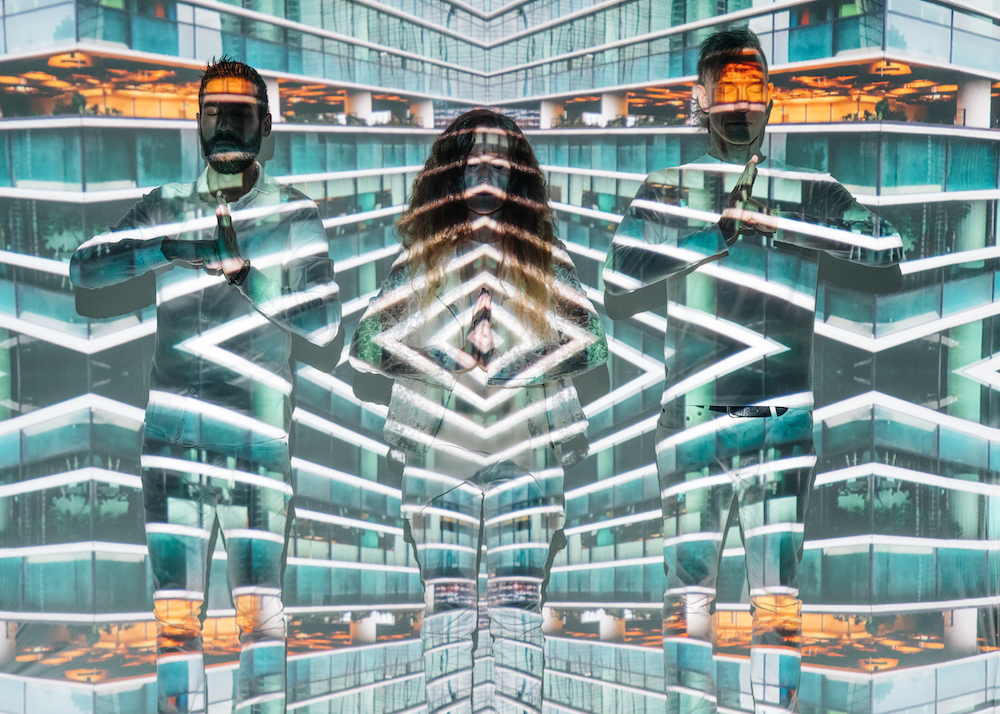
There’s a long history of people having one foot in the art world and one foot in the music world. The latest example of this is Monica Stroik, whose band Requiem, has a new album, titled POPulist Agendas, out this week. Think complex, blissed-out post-rock with a heady drone component. (The lineup also includes guitarist Tristan Welch and Douglas Kallmeyer on synthesizer.) The group got together during the pandemic and has continued to make work that is, in Stroik’s words, “media and genre fluid.” I spoke with Stroik about the group’s music and her own visual art — and where these worlds converge.
Whether it takes the form of art or solo musical projects, the members of Requiem have done a lot of creative work on their own. Has that had any bearing on the way that all of you collaborate in the context of the band?
Yes, absolutely. All of our individual experiences and projects come together as Requiem, with Tristan’s guitar playing and conceptual ideas and Doug’s extensive bass playing, arrangements, and engineering skills. For each piece of music I start by listening and imagining what my interpretation of the music is and then I ask them what the piece represents to them or elicits or ignites or was inspired by, along with the title of the piece. They in turn provide me with feedback as well. All of these points of view influence the layers, the colors, the spaces that I construct. There’s a mutual respect for each other’s ways of creating and we value each other’s individual expertise. This creates a natural ebb and flow process that involves deep listening to the music and to each other.
How have you applied your experience making art into more of a musical context?
Prior to creating video movements, my studio practice as a painter used music as a direct outcome on the canvas. Like Kandinsky, I would paint the movement and color that I was listening to, my body movement was my brush. I worked gesturally, building layers of colors, shapes, patterns, textures, and modulations. This intuitive practice is in direct correlation to my current video work. When we perform live I am channeling the movement of the music, listening and feeling, into color, texture, layering images just like the layering of paint on the canvas. I believe it has helped that I grew up in a musical family, singing and performing in bands. I have an understanding of rhythm and harmony that influences how I visually see the music while performing.
There’s a long history of artists having a foothold in music, from Talking Heads’ RISD background to David Wojnarowicz and Jean-Michel Basquiat’s time spent in bands. When you’ve played shows, do you find that you’re frequently playing with other musicians with ties to art, or are you more outliers?
While we often perform with other artists that use visualizations as a backdrop, it is rare that it is an integral aspect to the performance. Current trends in technology have made the visual aspect of video a more common element in musical performances, yet it is often disassociated or separate. What we are doing is combining the medium of art and music together. Our goal is to combine the elements of the visual and the auditory and provide an experience that is transformative. For Requiem, the video is not a backdrop for the music, they are equal.
Has playing in Requiem had any effect on the art you’ve made since the band began?
When we formed in 2020 we were in the throes of the Pandemic, so that, along with the political climate, was a major influence on the video content I was creating. With Requiem we realized we wanted to transform that frustration into our desire to bring hope and light into the living rooms via streaming and then, more recently, through our live performances. This has turned my focus not just to abstraction but also to nature. The visuals support this desire to take you on a journey, to help the listener go within themselves to find that moment of peace, to center oneself, to find renewal and relaxation within these busy lives we live. I want to help the listener/viewer to make connections to and be reminded of the beauty that surrounds us and is within each of us. In my painting studio, our video Immaculate Inning, influenced a recent body of work that focuses on clouds. Currently, I work in series, which is a direct influence of my video work: frame by frame, layers that transition one into the other translates into What painting comes next? How does the next painting change, evolve, transform into something else? I have always loved surrealism, which definitely ties my paintings and video work together.
Above is the video for “Immaculate Inning“ on Mutineer Records.
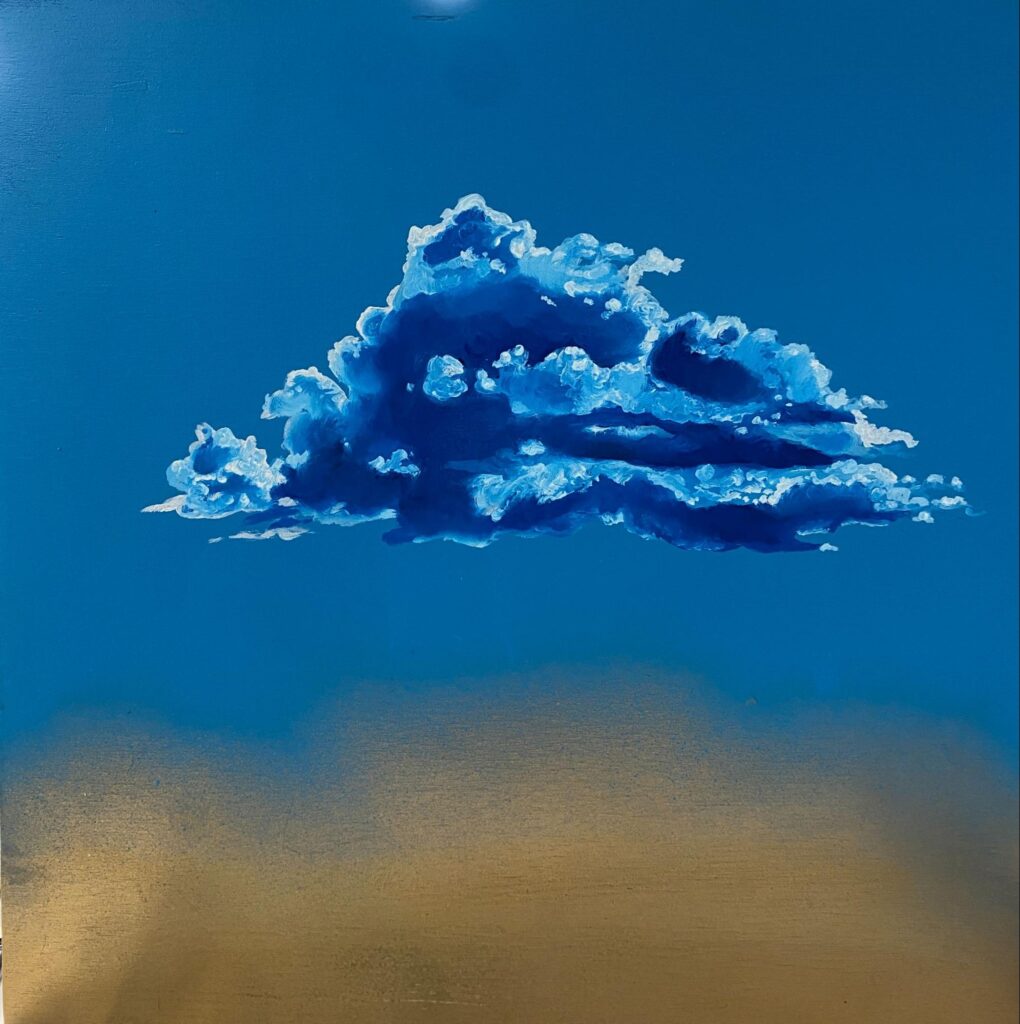
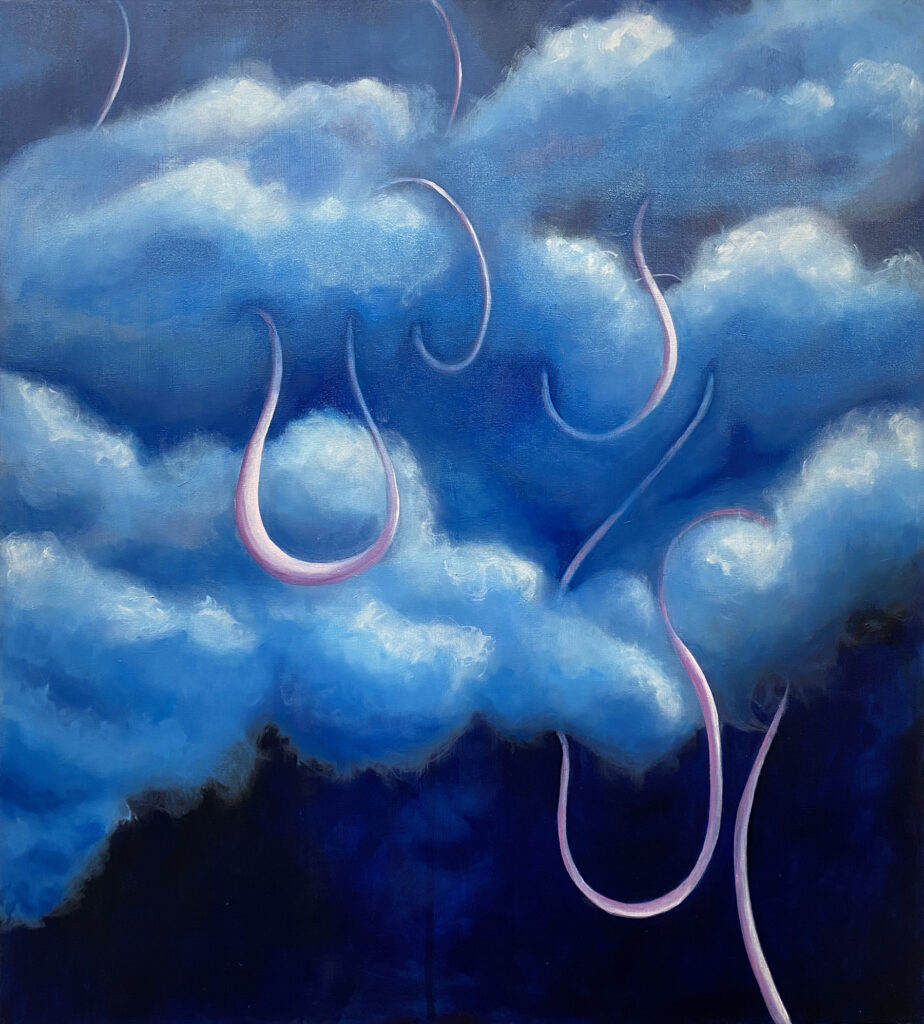
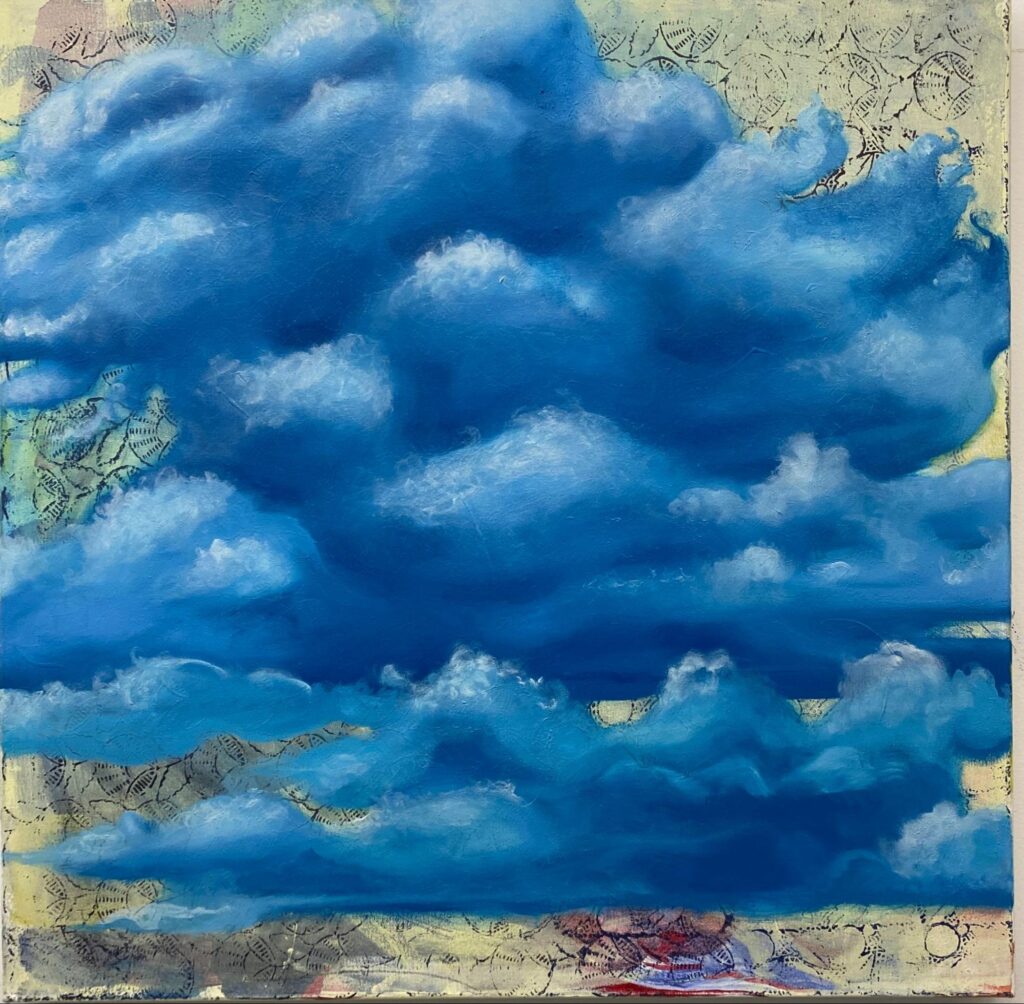
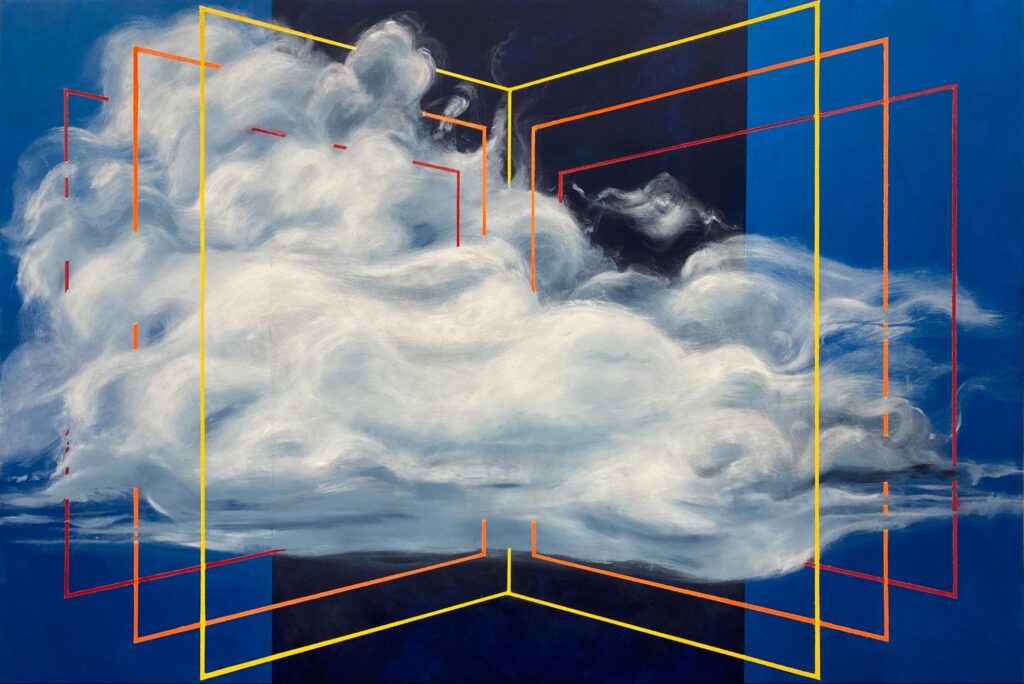
To what extent does Requiem seek out collaborations with other projects — whether artists or musicians?
Requiem has a rich history of collaborative work and releases with a number of musicians befriended through our label, Verses Records. The work we do is constantly evolving, so we often work in a collective format to achieve certain visions of the core members. For example, we wanted lush orchestral aspects added to a series of drone pieces so we worked with three of our favorite string and synth artists from the UK, Turkey, and SouthEastern US, resulting in the EP Universal; Language (Rusted Tone Recordings, UK). For our current release, POPulist Agendas, we wanted to experiment with accessible music formats, so for the first time we incorporated percussion by bringing in the talented Andrew Toy on drums. We fully believe in being media and genre fluid so undoubtedly there will be more collaborations in the future.
Photo: Cameron Whitman
Follow Vol. 1 Brooklyn on Twitter, Facebook, and sign up for our mailing list.
